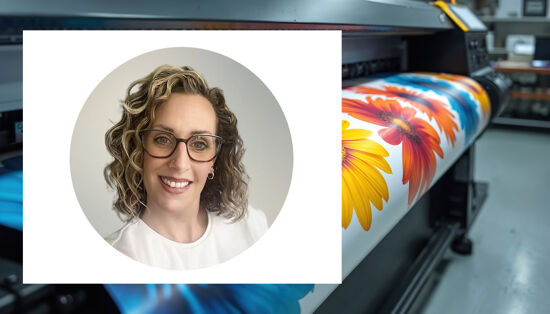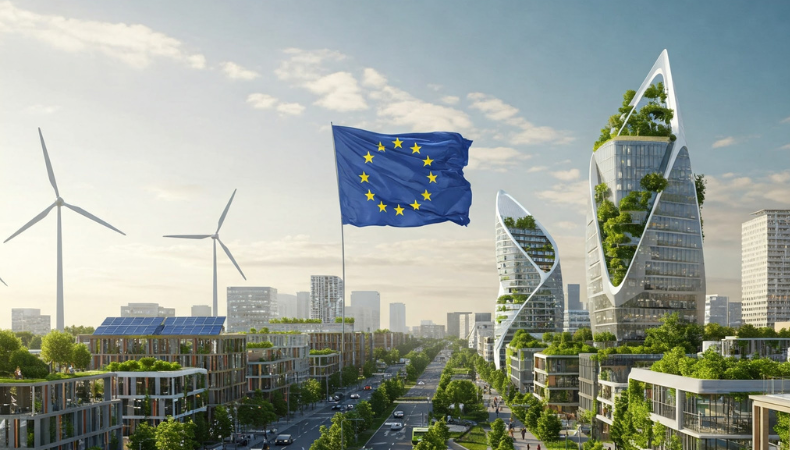Understanding Sustainability: Navigating Legislation, Logos, and Accreditations

The subject of Sustainability can be challenging to navigate and understand particularly regarding legislation, logos and accreditations. Steve Lister emphasizes that legislation as a compliance will be crucial this year in 2024.
Navigating the complex landscape of sustainability is crucial for print businesses in 2024. Legislation, logos, and accreditations form the backbone of corporate responsibility. Failing to comprehend their significance can have profound implications. Stringent environmental and social regulations demand compliance, and sustainable logos signify your commitments.
Without these, businesses risk reputational damage, legal consequences, and exclusion from lucrative tenders and potential new markets. Ignorance of the impact of sustainability can lead to missed opportunities and diminished competitiveness. In an era where consumers prioritise ethical choices, businesses not embracing sustainable practices losing their clients. To thrive, print businesses must grasp the importance of sustainable legislation, the use of logo’s, accreditations and integrate them seamlessly into their operations.
So let’s look at the legislative imperative as compliance will be key in 2024. Gone are the days when sustainability was solely a matter of corporate conscience. Stringent sustainability, environmental and social regulations are now demanding compliance, with hefty fines and reputational damage looming for non-adherence.
In the European Union, for instance, the landmark Corporate Sustainability Reporting Directive (CSRD) comes into effect in 2024, mandating large companies to report on their environmental impact, social responsibility, and governance practices. Similar legislative frameworks are emerging worldwide, underscoring the urgency for businesses to embed sustainability into their core operations – Green Claims Directive, this initiative, which is still under development but looks like being finally introduced in March 2024, aims to crack down on misleading sustainability claims made by companies. There are more coming like the Nature Restoration Law, Sustainable Products Initiative & Corporate Sustainability Due Diligence Law (CSDL) and the Corporate Sustainability Due Diligence Directive (CSDDD) expected in 2025. These are just some of the EU's sustainability regulations and the EU is constantly working to develop new policies to protect the environment and promote sustainable development.
Then there is the confusing world of Sustainable-Logo’s. The increased focus on demonstrating sustainable credentials is all over the printing industry, leaving print businesses grappling with a complex question: how can print companies demonstrate their commitment to sustainability in a way that's both credible and effective? The answer, unfortunately, isn't as clear-cut as slapping a generic "green" logo on your marketing materials. The world of sustainability-labels is a confusing one, teeming with over 450 different labels on EcolabelIndex.com alone. This abundance of options, while seemingly positive, presents a major challenge for print businesses. Choosing the right logo can be a labyrinthine endeavour, fraught with risks of ‘greenwashing’ and consumer confusion.
Same for paper, substrates, and inks: The diverse nature of printing materials further complicates the equation. Different sustainability-labels might focus on specific aspects like sustainably sourced paper, while others might prioritise water based or vegan inks or circular waste management strategies. Finding a label that encompasses the entirety of a print business's sustainability efforts can be elusive.
So, what's the way forward for print businesses amidst this sea of sustainability-labels?
Focus on transparency and credibility: Instead of chasing generic labels, businesses should prioritise genuine sustainability practices and communicate them transparently. This could involve highlighting the use of recycled paper, new water based or vegan inks, and responsible waste management strategies.
Seek targeted print certifications by researching and aligning with sustainability logo’s specific to the printing industry or the materials used (e.g. FSC for sustainably sourced paper) can provide more credibility and targeted messaging. Collaborate for industry-wide solutions as the printing industry can benefit from collaborative efforts to develop clear and standardized sustainability criteria and logo’s.
Remember, a single sustainability logo might not be the ultimate answer. A combination of transparent communication about sustainable practices, targeted certifications, and industry-wide collaboration can help print businesses navigate the confusing world of sustainable-labels and build trust with sustainably conscious clients.
Finally, accreditations for global print & marketing companies will need to be aligned in 2024. In 2024’s sustainably conscious landscape, global print and marketing companies can't afford to fall behind. Aligning with the key sustainability practices of major brands and retailers isn't just a short-term trend, it's now a business imperative. This requires attaining specific accreditations that verify your commitment to environmental responsibility. Here's a breakdown of the most sought-after certifications, why you need them, and the hurdles you might face on the path to sustainability:
There are some ‘Big Guns’ in sustainable accreditations – B Corp is the holy grail of sustainability, B Corp certification goes beyond mere environmental footprint, encompassing ethical labour practices, community engagement, and corporate governance. Scoring well on their rigorous B Impact Assessment is prestigious, demonstrating a holistic commitment to social and environmental good.
Then there is Ecovadis, this gold-standard platform assesses suppliers on environmental, social, and ethical practices across 21 CSR criteria. Earning a high Ecovadis rating positions you as a responsible player in the global supply chain, opening doors to partnerships with sustainability-focused brands & retailers.
However, there are also the ‘Foundation Builders’ like ISO 14001, this internationally recognized standard establishes a framework for implementing a Sustainable Environmental Management System (EMS). Achieving ISO 14001 certification proves your commitment to minimising your environmental impact, from resource management to waste reduction.
However, there are some challenges on this sustainable journey, first is the cost and effort. Achieving these accreditations requires investment in processes, data collection, and audits.
Smaller companies might find the initial financial and operational burden daunting. Then there is the internal buy-in. Shifting company culture towards sustainability can be challenging. Getting all departments on board, from procurement to marketing, is crucial for long-term success. Finally, maintaining these new standards.
Once certified, the work doesn't stop. Continuous improvement and data-driven decision-making are essential to keep pace with evolving standards and consumer expectations.
The road to sustainability may be bumpy, but for global print and marketing companies, the rewards of accreditation are undeniable. By prioritising sustainability and achieving these sought-after certifications, you can align yourself with global brands and retailers, secure a brighter future for your business, and contribute to key sustainability targets.
Remember, the journey towards sustainability is continuous, it’s a journey and not a destination. While these accreditations provide valuable milestones, the true goal is to embed sustainable practices into your company's DNA. By consistently evaluating and improving your environmental impact, you can become a true sustainable leader in the print industry.
Discover the latest innovations in sustainability in print at FESPA Global Print Expo 2024, Europe’s leading print and signage exhibition. Taking place from 19th – 22nd March 2024 at RAI Amsterdam, Netherlands. Register here to visit and use promo code FESJ408 for a 30 euros discount.
Topics
Recent news

Empowering the Print Community – Insights from Suzi Ward, MD of FESPA UK
In this podcast episode, Debbie McKeegan interviews Suzi Ward, the Managing Director of Fespa UK, discussing the evolution of the association, its role in supporting the print industry, and the importance of community engagement.
.png?width=550)
The European Union is driving massive sustainability change
The EU's ambitious Green Deal, aiming for climate neutrality by 2050, drives significant sustainability changes. Businesses worldwide, especially printers, must adapt to complex EU legislation. Compliance creates challenges but also new opportunities in areas like packaging and signage.

What are the benefits of print businesses committing to a Net Zero Carbon emissions target?
We speak to Robert Connell, Senior Commercial Sustainability Manager at ClimatePartner who who offer solutions along the net zero cycle to support business’s effort in corporate climate action. In this discussion we discuss the importance and the process and benefits of businesses committing to a Net Zero Carbon emissions target.

6 Sustainable Printing Practices Changing the Game in Textile and Apparel Decoration
The textile industry is shifting towards sustainability. Innovations like waterless and digital printing, eco-friendly inks, and recycled materials are reducing waste. AI and automation optimise production, while circular models promote reuse. Consumer demand for transparency drives this change, making sustainable practices essential for future-focused brands.